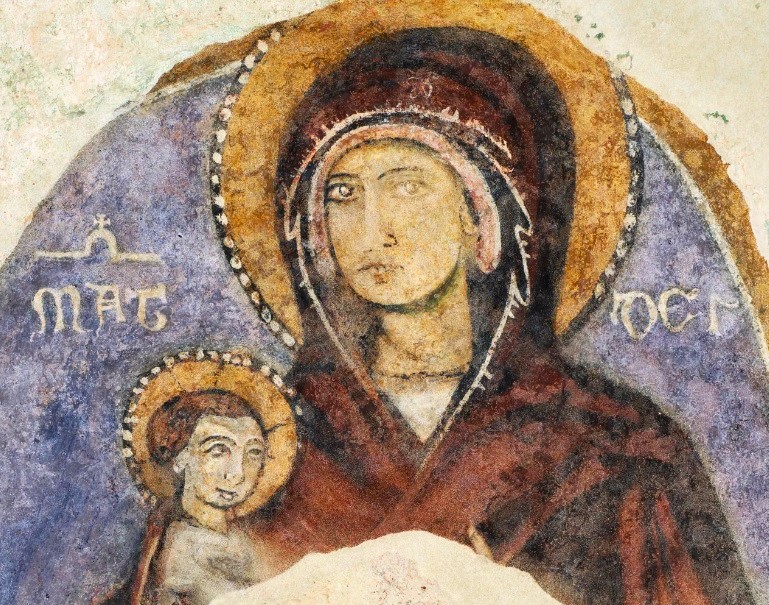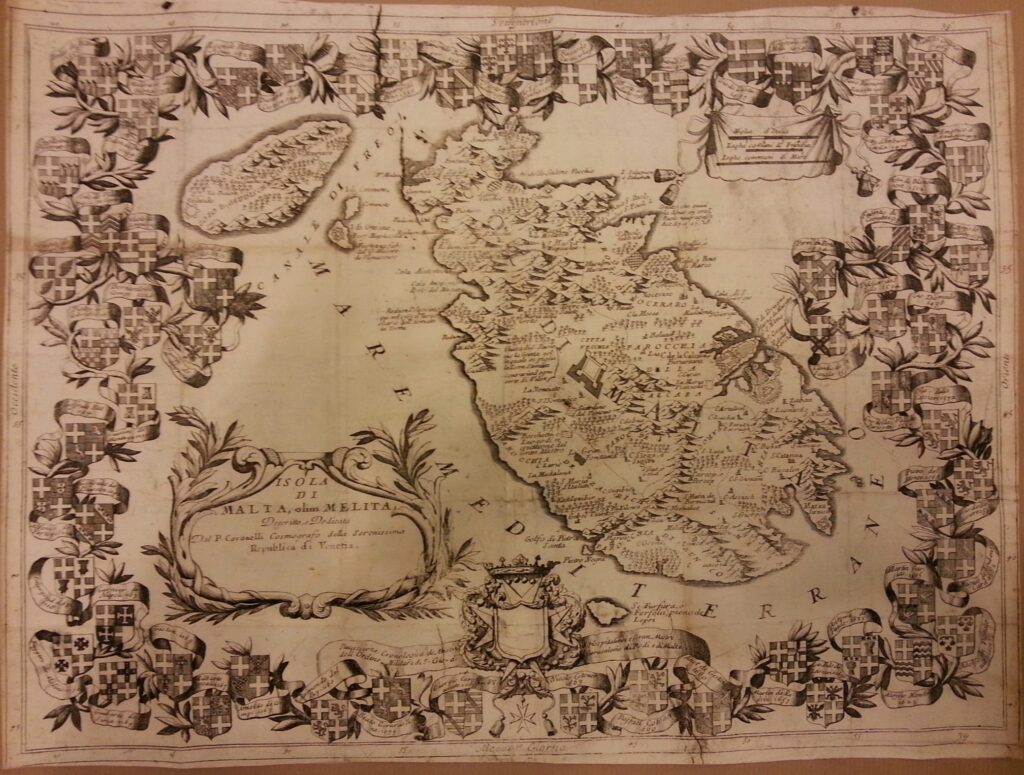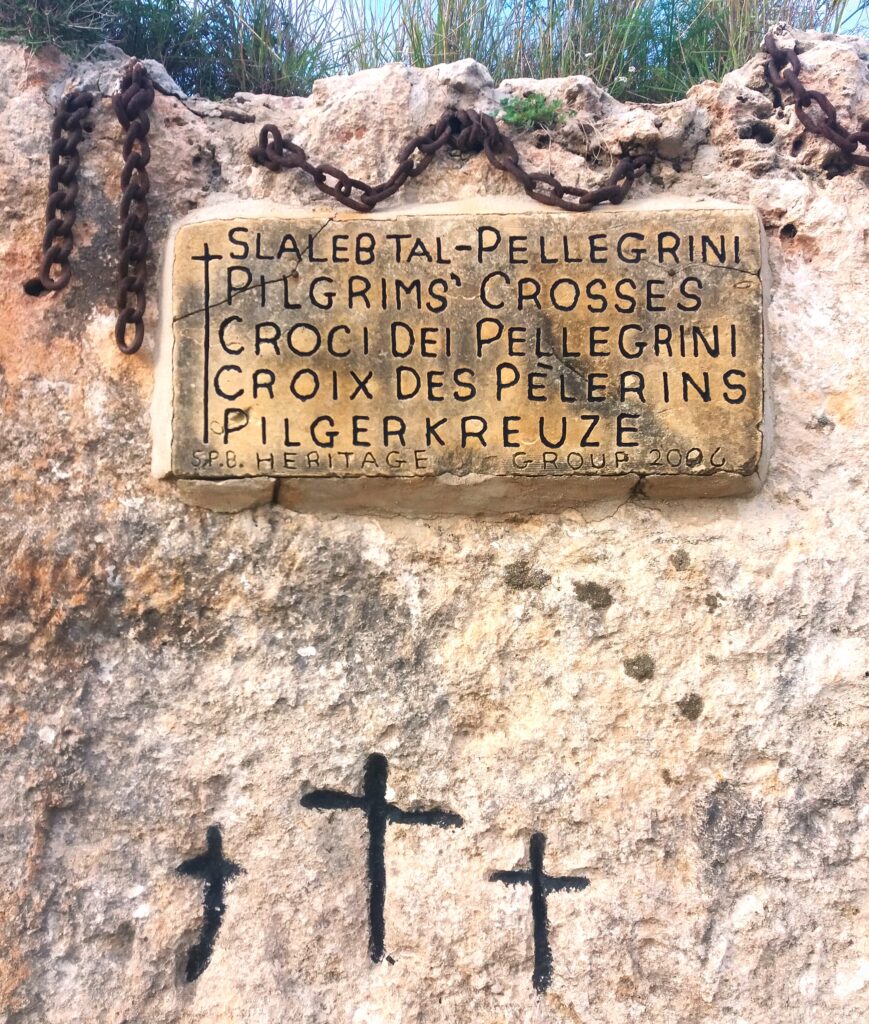XirCammini Projects
These are the six projects that we are currently working on.

Camino Maltés de Santiago de Compostela
The Order of the Knights of St. John of Malta have been associated with Xenodochia (refuges for pilgrims) since 1113 in Jerusalem. The Ordinis hospitalis Sanctj Jacobj de Alto Pascu, established to provide refuge to pilgrims on their way to Santiago de Compostela, also had a presence in Medieval Malta. King Frederick IV of Aragon instructed Sicilian, Maltese and Gozitan officials in 1373 to provide assistance to Italian members of the Order of St James visiting Malta.
In a Liber Bullarum entry of the early 17 th century Grandmaster Alof Wignacourt provides instructions of safe passage (a credencial) to Don Juan Benegas from St. Paul’s Grotto, Rabat, to visit holy places in Europe including Saint James In Galicia.
The Ministry for Foreign and European Affairs and Trade via its Embassy of Malta in Spain together with Heritage Malta and XirCammini (Malta’s official association representing the International Federation of the Associations of Friends of the Camino de Santiago) with the support of the Malta Tourism Authority, are pleased to announce that following months of collaborative effort, Malta is now connected to the world-famous Camino de Santiago. For the first time, the more than 1,000 year old pilgrim route now includes the Camino Maltés de Santiago de Compostela, (in short Camino Maltés) which will shortly be available for both local and international pilgrims to undertake by land and sea.
The Camino Maltés commences in Malta, continues with the Cammino di San Giacomo in Sicily, the Camin St. Jacu in Sardegna and the Camino Catalan in Spain, ending in Santiago de Compostela. For more information on the Camino Maltés please visit www.caminomaltes.mt.

Camino Mariae Melitensis 1432AD
In 1432AD, a few years after Malta was granted self-government within the realm of the Aragonese Kingdom and after the 1429 pyric victory that Aragonese troops and Maltese militia had over the Mehrabian kingdom of the Hafsids that besieged Mdina, King Alfonso V visited Malta on his way to North Africa to quell the revolts.
While in Malta King Alfonso V undertook a pilgrimage to the Mater Dei sanctuary in Mellieħa.
XirCammini is working on the Camino Mariae Melitensis 1432AD Project, a camino that will commence in Castrum Maris, continuing through Citta Notabile (Mdina) and the Pilgrim Path in St. Paul’s Bay to the Sanctuary of Our Lady in Mellieħa.
More information about the historical context is available here.

Universal Peace Walk
The Universal Peace Walk was instituted by Bishop Domenico Cubelles in 1543. It was both a socio-political peace walk and an ecumenical pilgrimage. Its aim was ‘Pro pace universali’. The word ‘ecumenical’ is derived from ancient Greek ‘oikoumenikos’ meaning ‘the whole inhabited world’ and is therefore universal in meaning. The Universal Peace Walk was first walked from Citta Notabile (Mdina) to Le Terre di Santa Caterina (Żejtun) on the feast of St. Gregory, i.e. 12th March 1543, with the intention of universal peace in Europe after the failure of the council of Mantua in 1536 and in preparation of a new council in Trent in 1545.
Universal Peace Walk 1543AD® is registered as a trade name belonging to XirCammini and protected by law (Ref: 59214). XirCammini is a NGO registered in Malta, focusing on developing, sharing and walking ancient heritage trails as a common European heritage.
More information about the historical context is available here and a website dedicated to the Universal Peace Walk is here.

Itinerario De Mello 1436AD
A few years after Aragon granted Malta self-government, the church undertook a census of parishes and churches in Malta. This was carried out by Bishop Senatore de Mello in 1432AD. The parishes in the register are the Cathedral of Mdina, Malta, the Cathedral in the Citadel, Gozo, Birkirkara, Naxxar, Qormi, Żebbug, Żurrieq, Żejtun, Bir Miftuħ, the Sanctuary in Mellieħa and Ħal Tartani (Dingli). The latter two were removed from parishes by a subsequent ecclesiastical visitor, Pietro Dusina, in 1575AD.
XirCammini is working on the Itinerario De Mello 1436AD Project, a walk encompassing all the parishes of Medieval Malta.

Melita Mariana
Marian Devotion in Malta goes back to the Byzantine era from tas-Silġ, Marsaxlokk, the troglodyte (cave) churches dedicated to Mother Mary and later devotions developed in late Medieval times and remains strong today.
XirCammini is working on the Melita Mariana Project, a 5-day ( > 100km) walk covering ancient, old and more recent Marian devotions in Malta and Gozo.

Peregrinatio Sancti Pauli Apostoli
Acts 28, “Once safely on shore, we discovered that the island was called Malta. The islanders showed us unusual kindness.” St Paul the Apostle, together with Luke the Evangelist, were shipwrecked in Malta on their way to Rome in 60AD.
XirCammini is working on the Peregrinatio Sancti Pauli 60AD Project, a walk from where tradition holds that St Paul was shipwrecked in St Paul’s Bay, through San Pawl Milqi, where St Paul met the Roman Governor (and first bishop of Malta) Publius, healing his father, Salini and Naxxar (San Pawl tat-Tarġa) and onward to St Paul’s Grotto in Rabat.